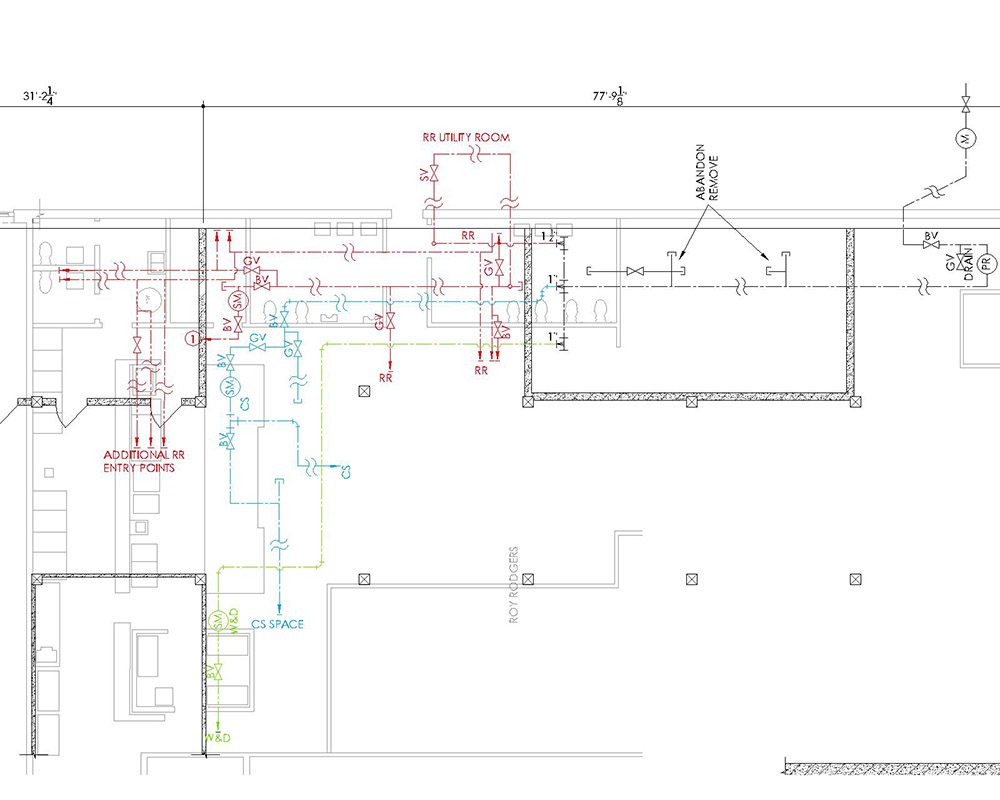
Invisible? Yes but design nevertheless. This is part of an actual project done to explain a required plumbing modification to a property owner. It was an old building with no record of existing conditions. We assisted the property manager by assimilating photos, sketches, and contractor notes into an understandable format which allowed the owner to allocate funds for the repair.
What do Facilities Management Companies Do?
Did you ever take a look at the list of services offered by Facilities Management Companies? These companies do everything from A to Z when it comes to existing properties and if one cares to run through Wikiapedia’s very unofficial list, they might find that all of the items involve an architect at some point along the way.
Environment, Health and Safety: This is a big category. Suffice it to say, in order to maintain their professional credentials architects are required to participate in continuing education. This is most often done through attendance on educational presentations, classes, and seminars put on by product and industry professional experts. These activities are measured in terms of time spent and category of subject matter. The Health Safety and Welfare category carries the largest number of required learning units. It is fundamental to the practice of architecture.
Fire safety: Facilities managers are charged with maintaining, inspecting,testing, and reporting on the the condition fire safety systems in a building. Architects, along with their engineers, can often provide valuable documentation about these systems and may be imperative in the event modifications or improvements become necessary.
Security: “Protection of employees and the business often comes under the control of the facilities management department, in particular the maintenance of security hardware.” All I need to say about this point is, think about those long tedious door schedules that show up on a set of architectural drawings for a property.
Maintenance, Testing and Inspections: These days, this work is often outlined and planned in the bid and contract documents for a project. On bigger projects, computer aided building management software (BIM) may be used by architects and other trades to follow a project from the idea to occupancy.
Building Maintenance: Building maintenance comprises all preventative, remedial and upgrade works…” including “…disciplines such as painting and decorating, carpentry, plumbing, glazing, plastering, and tiling.” No explanation required here. Most architects are happy to work on, and often improve the quality and implementation of any maintenance project requiring product research and detailing.
Cleaning: What, one might ask, has an architect to do with cleaning? Nothing, of course, but don’t be too hasty. I actually worked on a project in a big open atrium that caused the facilities person no end of trouble because scaffolding was required for the window washers to access the interior glass and when they were finally able to reach the area to be cleaned, water dripped down onto the exposed fascia below causing discoloration and staining. It was an architectural detail that finally solved the problem (drop me a note if you would like to know how it was done)
Operational: “Soft” services are not in an architects purview but the “hard” services, such as the mechanical, fire and electrical services might be.
Business Continuity Planning: This is another item that is not typically thought of as in an architects scope of service, yet I have worked on many projects that involved designing, coordinating and administering a temporary location that allowed a business to stay open during a major remodel.
Space Allocation and Changes: I learned a new term in this category: “Churn.” It means frequent spatial changes in the layout of a space. Well said, and certainly there is no question of an architects value in this department. Moving things around in space is what we do!
